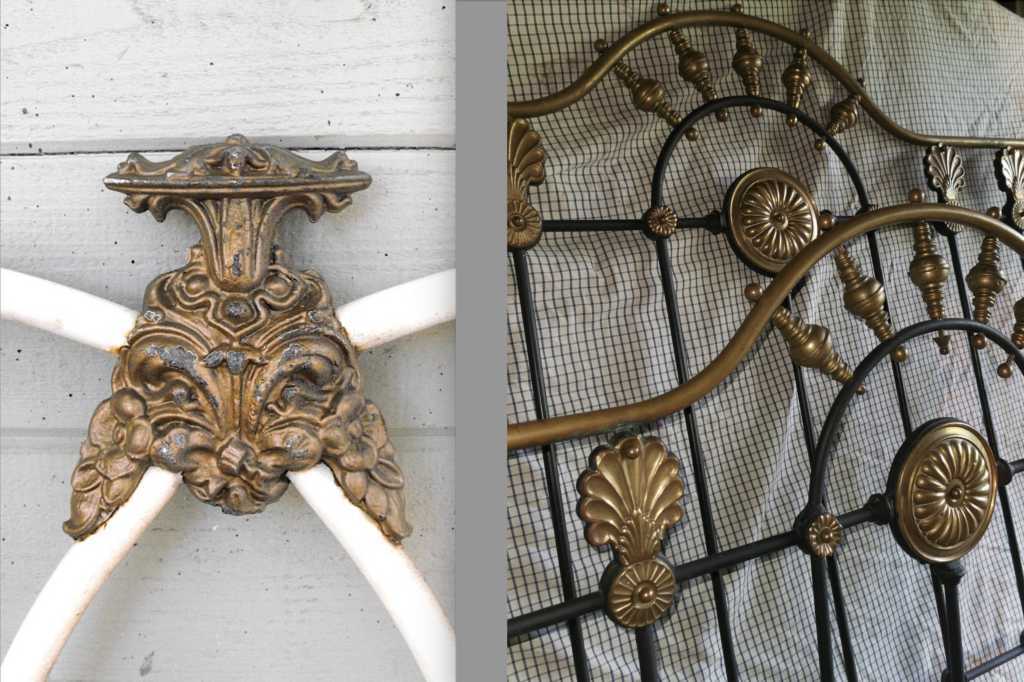Antique iron beds have long captivated admirers with their timeless charm and craftsmanship. However, a noticeable divergence exists between British/European designs, which often incorporate decorative brass elements, and American counterparts, which prioritize intricate iron castings. This intriguing contrast invites exploration into the historical, cultural, and technological factors that shaped each region’s approach to bed design during the 19th century.
To comprehend the preference for brass in British/European antique iron beds, one must consider the cultural and stylistic influences prevalent during the Victorian era. In Europe, brass was esteemed for its association with luxury, opulence, and refinement. Its golden hue symbolized wealth and sophistication, making it a favored embellishment for furniture, including beds. Moreover, European craftsmen drew inspiration from classical motifs and ornate designs, infusing their creations with intricate brass accents to exude elegance and grandeur.
Conversely, American bed makers embraced a distinct aesthetic ethos rooted in pragmatism, simplicity, and industrial innovation. During the 19th century, America experienced rapid industrialization and the rise of mass production techniques. This shift influenced the design philosophy of iron beds, emphasizing efficiency and functionality over ornamental extravagance. Consequently, American craftsmen focused on harnessing the versatility of iron, employing intricate castings and elaborate designs to showcase their technical prowess and creativity.

The variance in material preference between British/European and American antique iron beds can also be attributed to differences in metallurgical expertise and manufacturing capabilities. Historically, Europe boasted a rich tradition of metalworking dating back centuries, with skilled artisans mastering techniques such as casting, forging, and gilding. The abundance of brass deposits in regions like England facilitated its widespread use in furniture making, enabling craftsmen to achieve intricate detailing and exquisite finishes.
In contrast, America’s iron industry burgeoned during the 19th century, fueled by innovations in smelting, casting, and rolling processes. Iron became synonymous with American ingenuity and resilience, driving the proliferation of iron bed production across the nation. American manufacturers capitalized on advancements in metallurgy and machinery, pioneering new methods to cast and manipulate iron into elaborate designs previously unattainable. This emphasis on iron castings reflected not only technological prowess but also a cultural inclination towards ruggedness and durability, qualities synonymous with the American frontier spirit.
Furthermore, economic factors played a pivotal role in shaping the divergence between British/European and American antique iron bed designs. In Europe, the aristocracy and affluent bourgeoisie constituted a significant market for luxury furniture, driving demand for ornate brass-adorned beds that showcased social status and taste. The proliferation of brass beds in European households underscored a desire for ostentatious displays of wealth and refinement, perpetuating the tradition of brass embellishments in bed design.
In contrast, America’s burgeoning middle class and expanding population created a more diverse consumer base with varying tastes and preferences. Iron beds emerged as a practical and cost-effective alternative to traditional wooden bed frames, appealing to a broader demographic seeking affordable yet durable furniture solutions. The utilitarian nature of iron beds resonated with American sensibilities, aligning with the nation’s ethos of resourcefulness and egalitarianism.
Despite distinct stylistic preferences, cultural exchange and artistic innovation fostered cross-pollination of design elements between British/European and American iron bed makers. Transatlantic trade facilitated the exchange of ideas, patterns, and decorative motifs, leading to hybrid designs that melded the elegance of brass with the robustness of iron castings. Furthermore, international exhibitions and fairs showcased the craftsmanship of both regions, inspiring artisans to experiment with new techniques and styles.
In summary, the preference for decorative brass in British/European antique iron beds and the prevalence of intricate iron castings in American counterparts reflect a convergence of historical, cultural, technological, and economic factors. While European craftsmanship celebrated the luxury and refinement of brass, American bed makers embraced the versatility and durability of iron, reflecting distinct cultural sensibilities and industrial trajectories. Despite these differences, both traditions exemplify the enduring legacy of antique iron beds as icons of craftsmanship, beauty, and cultural heritage.







